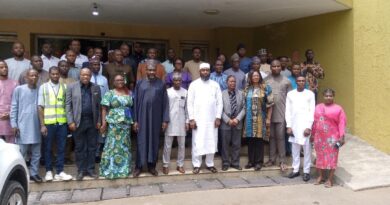World Food Day: How climate change causes migration, food insecurity
The World Food Day, marked on October 16 every year is an opportunity to celebrate the progress made towards achieving Zero Hunger by 2030 (one of the UN’s key Sustainable Development Goals), to galvanize action for those who suffer from food insecurity and hunger, and to reflect on the new challenges arising from climate change.
The intertwining of global food security and climate change is a major concern for governments, UN agencies and civil society alike, and current global migration patterns are likely to make the situation even worse.
Recognizing these interlinkages, this year’s World Food Day theme is “Change the Future of Migration: Invest in Food Security and Rural Development.”
In a message for this year’s World Food Day 2017, UN Migration Director General William Lacy Swing said: “Climate action is paramount. Climate change is having far-reaching effects on agricultural productivity and food security. It is among the main reasons for the record numbers of people compelled to migrate from rural areas to towns and cities around the world. Importantly, the Paris Climate Change Agreement recognizes the need to protect vulnerable populations, including migrants, and establishes a dedicated task force to advance strategies that avert, minimize and address displacement related to climate change.
Historically, people have been forced to flee their homes due to civil wars, political instability, poverty and hunger, but the growing number of extreme weather events linked to climate change is now increasingly contributing to migration.
According to the UN Food and Agriculture Organization, there were 244 million international migrants in 2015, 40% more than in 2000. In the same year, over 19 million people were internally displaced because of natural disasters. Between 2008 and 2015, an average of 26 million people were displaced annually by climate or weather-related disasters.
Due to the growing frequency of tropical storms, hurricanes, droughts, and floods in many parts of the world, and in the wake of the devastating impact of natural disasters on the lives and livelihoods of climate-vulnerable communities, the scale of migration is expected to grow even further.
About 80% of the world’s extreme poor live in rural areas and the majority of them are dependent on agriculture or other natural resource based activities. The agriculture sector is extremely sensitive to climate change which makes it even more challenging to produce the 60% more food required by 2050 to feed a growing population.
Creating conditions that allow rural people to stay where they live and building the resilience of displaced communities are key elements of a global response to the migration challenge. For example, helping people build livelihoods, adopt climate smart agriculture techniques, grow drought resistant crops and build stormproof ponds can address some of the root causes of migration arising from climate change.
The global climate agenda is now focused on driving the momentum forward for climate action to ensure food, nutrition and livelihood security for all. Investments in sustainable agriculture and food systems, resilient livelihoods and solutions to environmental degradation and climate change adaptation will be a key focus during the upcoming UN Climate Change Conference (6-17 November) in Bonn, Germany.




